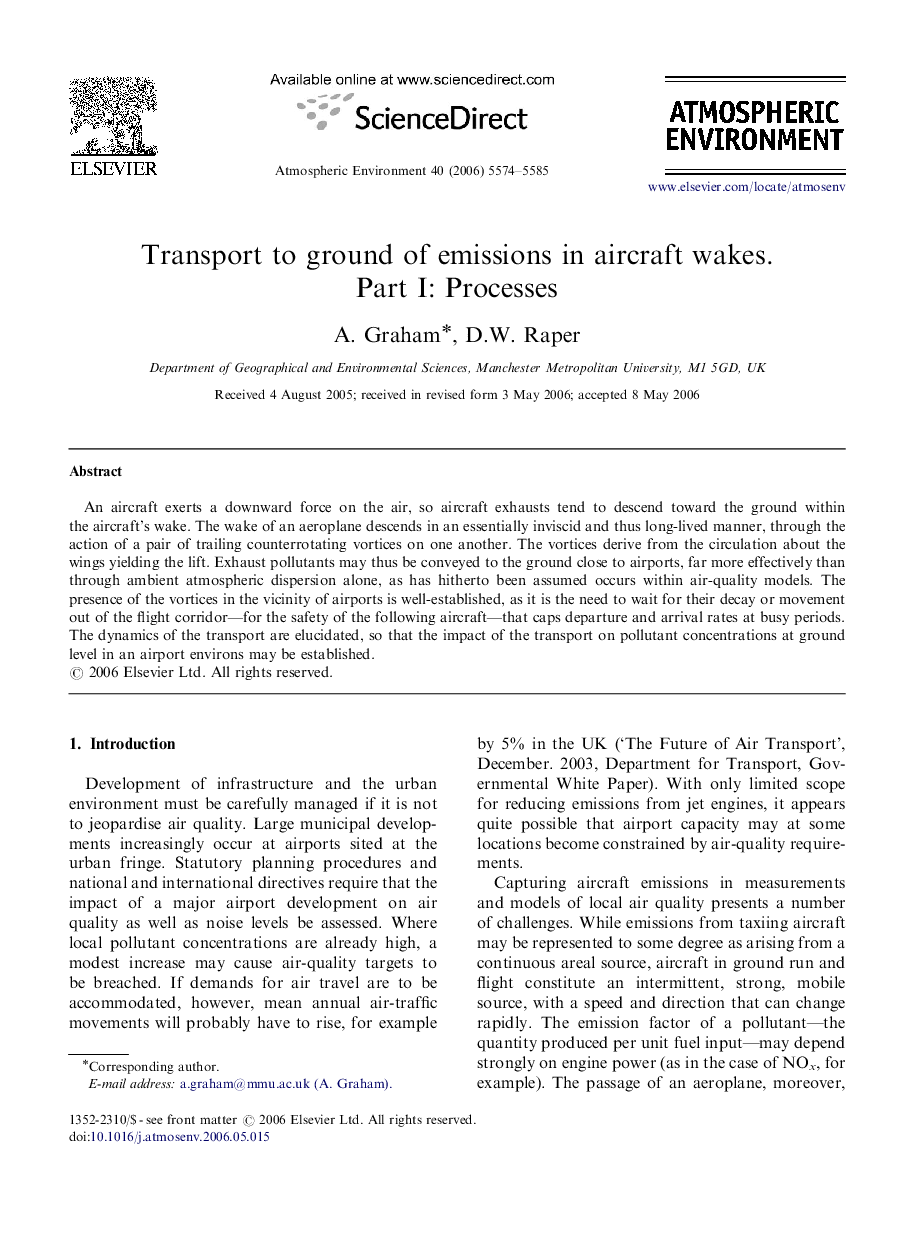| Article ID | Journal | Published Year | Pages | File Type |
|---|---|---|---|---|
| 4444362 | Atmospheric Environment | 2006 | 12 Pages |
An aircraft exerts a downward force on the air, so aircraft exhausts tend to descend toward the ground within the aircraft's wake. The wake of an aeroplane descends in an essentially inviscid and thus long-lived manner, through the action of a pair of trailing counterrotating vortices on one another. The vortices derive from the circulation about the wings yielding the lift. Exhaust pollutants may thus be conveyed to the ground close to airports, far more effectively than through ambient atmospheric dispersion alone, as has hitherto been assumed occurs within air-quality models. The presence of the vortices in the vicinity of airports is well-established, as it is the need to wait for their decay or movement out of the flight corridor—for the safety of the following aircraft—that caps departure and arrival rates at busy periods. The dynamics of the transport are elucidated, so that the impact of the transport on pollutant concentrations at ground level in an airport environs may be established.
